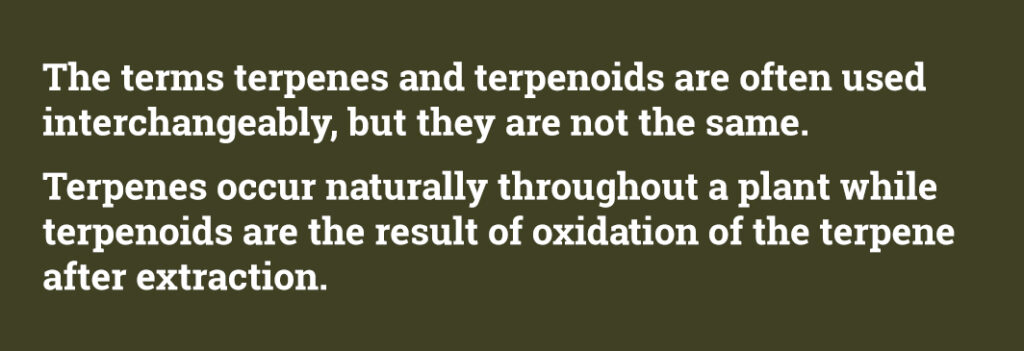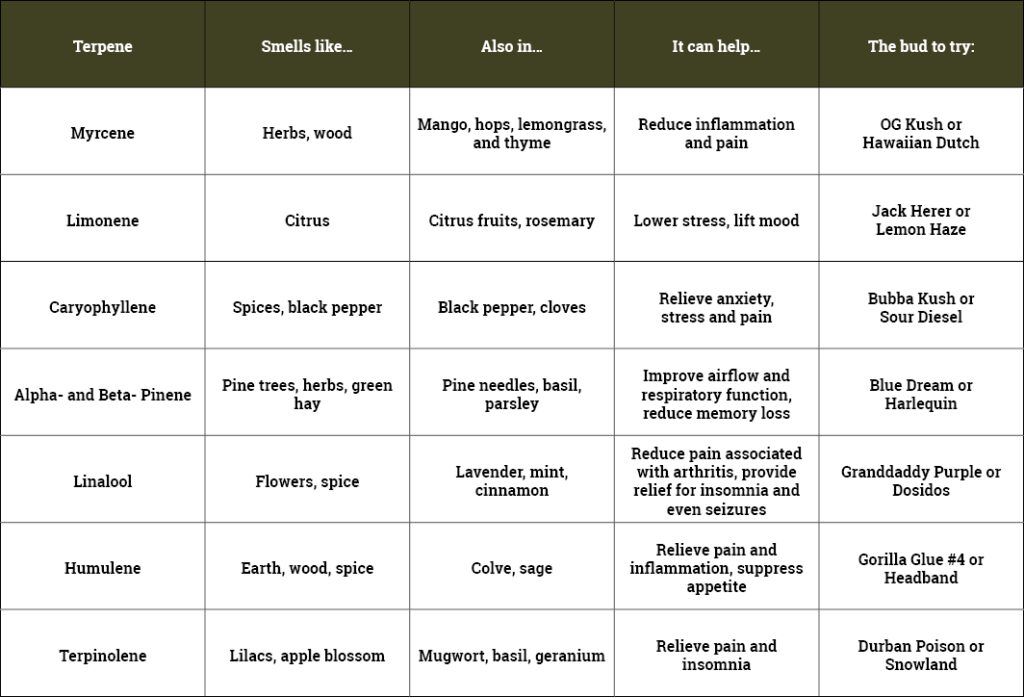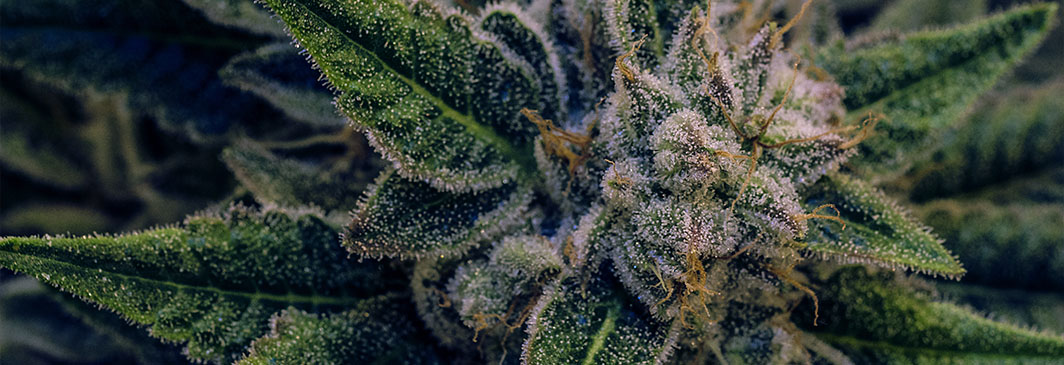Why does weed smell like … weed? Why do some strains of MJ have a citrus aroma while others smell like a pine forest?
It’s all about the terpenes.
Whether you’ve been partaking for years or just discovered a love for marijuana, understanding the components that make up your MJ can can help you make the most informed decision at the dispensary.
In this post, we’ll define terpenes, list the most common among them and offer insight on how terpenes affect your high.
What Are Terpenes?
Terpenes are compounds found in plants that influence how that plant smells. While many people associate terpenes with cannabis, they’re actually found in a wide range of plants and herbs. Terpenes are also the most common chemical compound found in essential oils.
In nature, a terpene’s job is to attract pollinators and ward off predators. Among us humans, terpenes have been studied for their wide variety of health benefits, and even used as an effective delivery method for transdermal medications.
Here’s how Eybna CEO Nadav Eyal described terpenes on a recent NCIA podcast:
“Terpenes are a group of organic compounds found in a very wide diversity of plants in nature. They play a very unique role in the plant. On one hand they defend the plant from different diseases and bacteria, things that can basically kill the plant. But on the other end, they are attracting pollinators for the plant to be able to continue and find a way to distribute in nature.”

Types of Terpenes
Many people associate terpenes with cannabis because cannabis plants contain large and varied amounts of terpenes. Keep reading for a look at some of the best known terpenes and where to find them in your MJ.


How Do Cannabis Terpenes Affect Your High?
Terpenes are not thought to get you high in the same way other compounds within cannabis do (THC, namely), but the more researchers dig into terpenes, the better we understand how their presence can affect your high.
The entourage effect. The entourage effect was first introduced in the world of cannabis in the late 1990s by Israeli researcher Raphael Mechoulam. In its simplest form, the entourage effect describes the idea that all the components of cannabis (including CBD, THC and terpenes) are more effective together than any single compound on its own. Essentially, the whole is greater than the sum of its parts.
Terpenes and your high. In addition to medicinal benefits, the terpenes we listed above have been known to influence users’ high. Some terps — like myrcene and linalool — have a calming, sedative effect, while others are more energizing. Here’s how the above terps fall:

Do Terps Get the Credit They Deserve?
THC and CBD have long been thought to be the primary drivers when it comes to getting you high, but while more research is needed, terpenes are getting increasing credit for how you get high.
“Up until now people thought [terpenes] are [carriers] for cannabinoids to help cannabinoids absorb differently in the body,” Eyal said. “What we were able to prove in the last couple of years in our research is that terpenes by themselves have a very distinctive effect when it comes to binding to different receptors in the human body.”
What does that mean? Some receptors within your body, particularly in the endocannabinoid system, have been shown to be activated by terpenes. And while many essential oils as well as CBD oils that contain terpenes are applied topically, Eyal notes the most effective way to absorb terpenes is via inhalation.
Ask Your Budtender about Terps
Terpenes are increasingly piquing the interest of the cannabis community — both dispensaries and users. Knowledgeable budtenders will be able to break down the different types of terpenes and how they present themselves in certain strains of MJ.
The best way to find what works for you is to give it a try. Visit your local cannabis dispensary ready to smell and sample.

